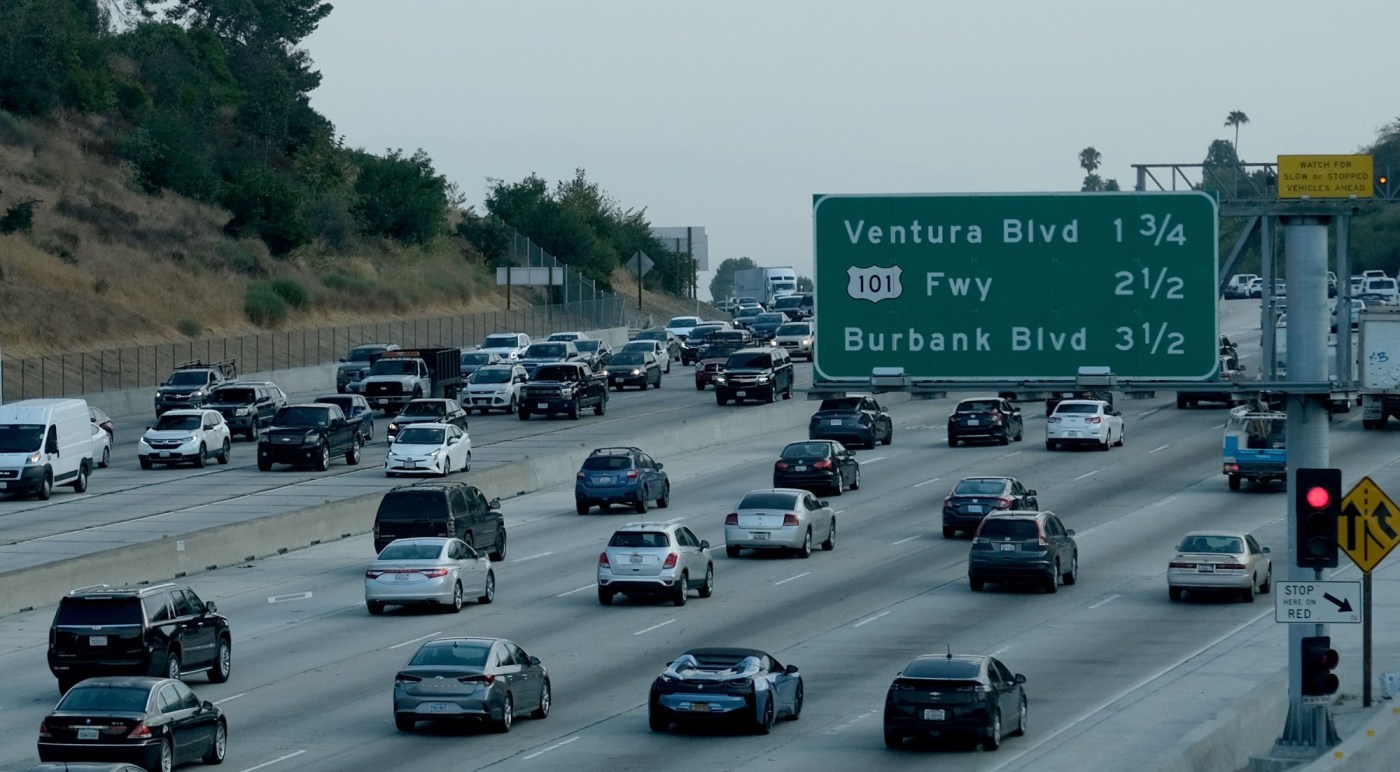Q: Honk: Why does Caltrans leave that plastic film on its green highway signs that dissolves over time and comes off in pieces — and just looks lousy? Why not just take it off before putting a new sign up like was previously done? Or is it intended to deter graffiti?
– John Heffernan, Newport Beach
A: Well, John, let’s ask.
“The plastic film protects the sign against graffiti,” said Nathan Abler, a Caltrans spokesperson, adding that when workers remove the vandalism, the film protects the sign’s reflective ability.
“Heat from the sun and weather conditions cause this film to peel off over time. Here in Orange County,” he continued, “Caltrans District 12 maintenance personnel will only remove peeling or loose plastic if it poses a hazard to drivers. Otherwise, excessive removal could damage the original sign underneath.
“Caltrans is working on replacing these signs, with several forthcoming projects in various stages of planning or design that will address a variety of delaminated signage in Orange County.”
Q: We just got these lines added to Highway 142 at the hairpin turns. What do they mean?
– Kerry B. Woods
A: Kerry sent along a photo and is talking about a stretch of Carbon Canyon Road, on about the 2100 block, several miles east of the Orange County border in Chino Hills.
He is referring to thick, short, white lines that run horizontal from both edges of the lane.
They are called “speed-reduction markings” — say that 10 times at bedtime and Honk promises you will nod off.
Unlike the name, the concept is fascinating, which is why Honk answers questions like yours every now and then, Kerry.
Caltrans uses them to trick the mind — to help the driver.
As you motor along, the lines get closer and closer together.
“This creates an optical illusion that makes drivers perceive an increase in speed, thereby encouraging them to slow down,” said Eric Dionne, a Caltrans spokesman for San Bernardino County.
Caltrans has used them on a curvy freeway ramp and in a stretch of Pacific Coast Highway, too.
But the agency doesn’t trot them out often — it doesn’t want drivers to get used to them so they lose their effectiveness.
“Speed-reduction striping is used sparingly to ensure heightened awareness for the traveling public,” Dionne explained.
HONKIN’ SPOTLIGHT: “I’m kind of a goofy, outgoing person,” Shane Spielman, a motorcycle officer for Anaheim P.D. for 20 or so years, told Honk the other day. “I like to have fun. I like to connect with people.”
They were discussing a future Honk Q-and-A he is helping the wise one answer.
He and Honk are, well, peers. Spielman takes Honk-like questions, too, on Instagram and answers them, with the backing of a fun tech team. You can find him on the agency’s anaheimpd account.
Honk makes a promise: You will learn stuff and get a good chuckle or two.
To ask Honk questions, reach him at honk@ocregister.com. He only answers those that are published. To see Honk online: ocregister.com/tag/honk. Twitter: @OCRegisterHonk
